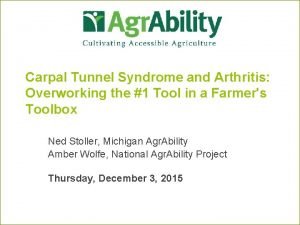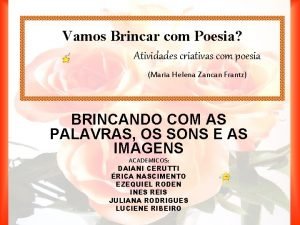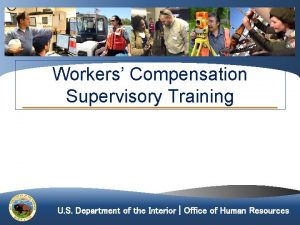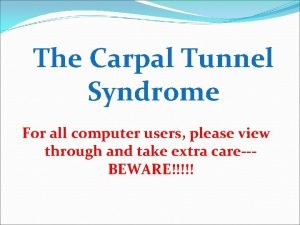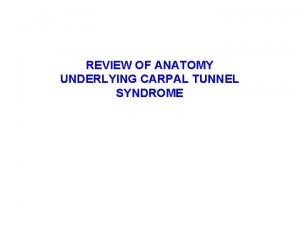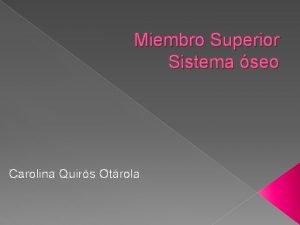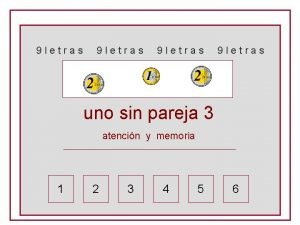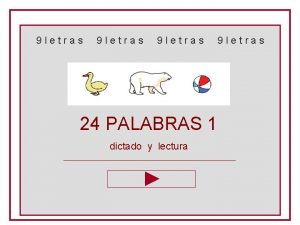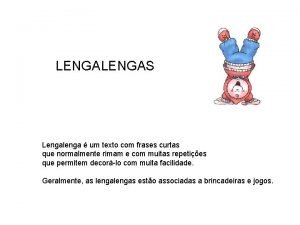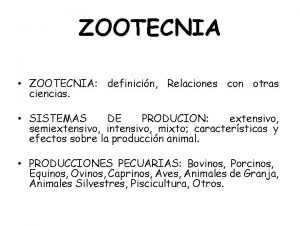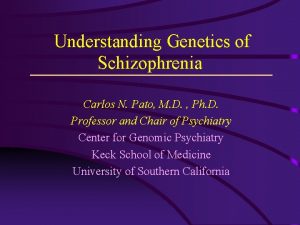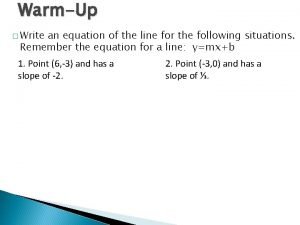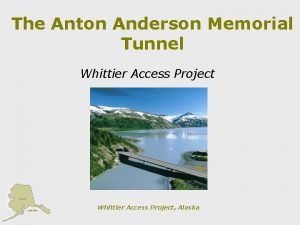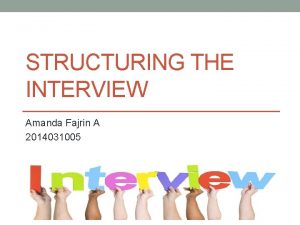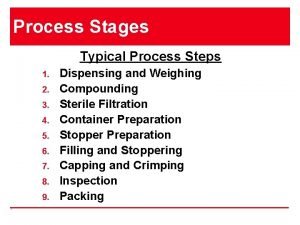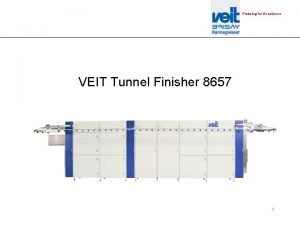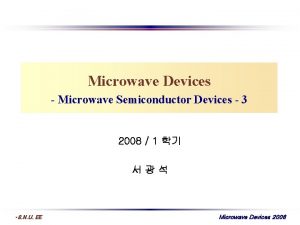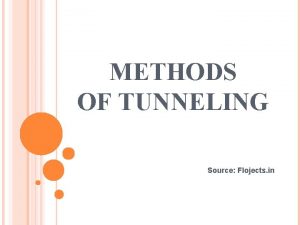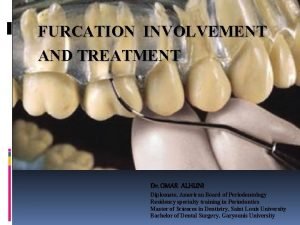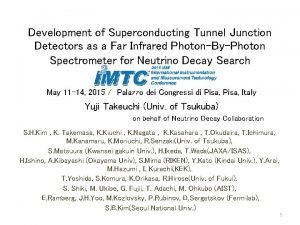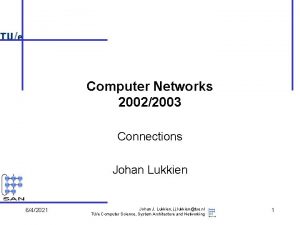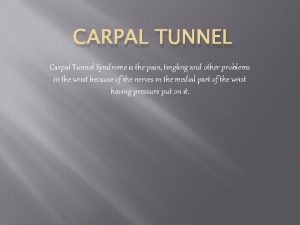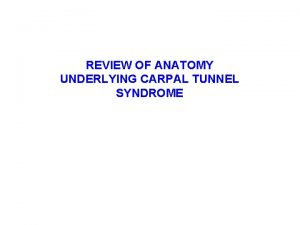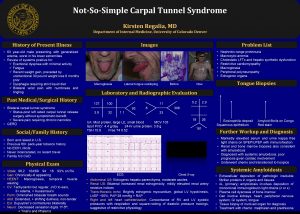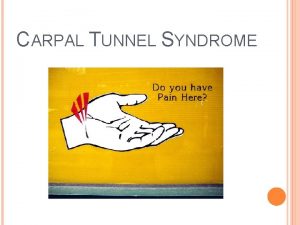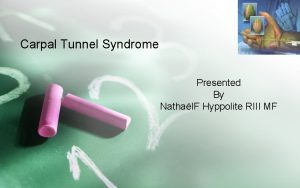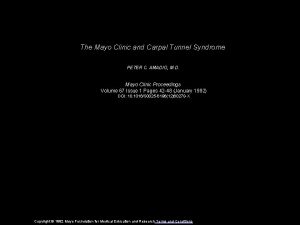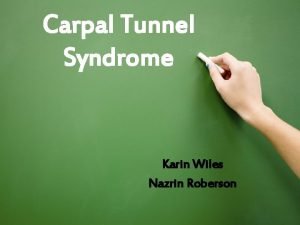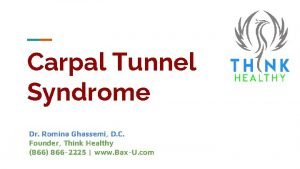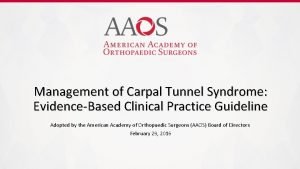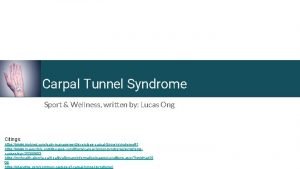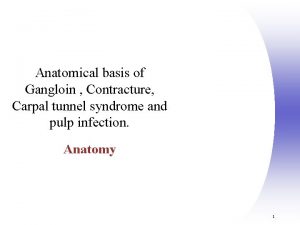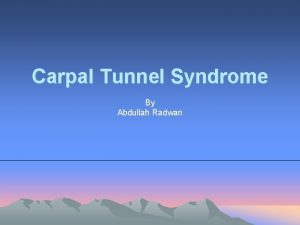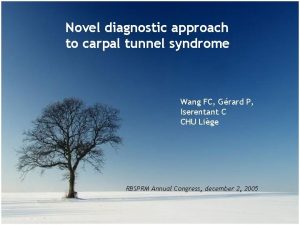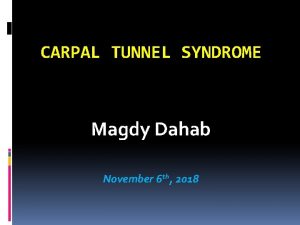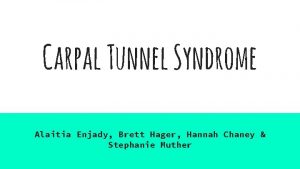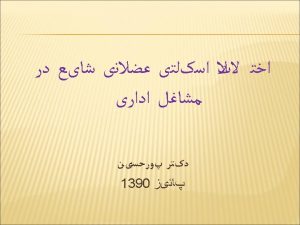Carpal tunnel syndrome Dr F Pato History 49








































- Slides: 40

Carpal tunnel syndrome Dr F Pato

History • 49 years old, male patient. • Two months hx painful and swollen right hand along the wrist joint. • The pain started as a tingling sensation in the hand. • Radiates up the arm and stops midway in arm. • The hand feels as if it is on fire. • He cannot flex his hand at the wrist and unable to make a fist.

• Nil Previous medical history • Nil Previous surgical history • Self employed welder

Examination General systems intact Minimal swelling at wrist joint Unable to flex wrist joint Can only flex metacarpo phalyngeal joints Extension of wrist joint also impaired Decreased apposition of fingers Movement associated with pain Loss of sensation sparing thenar eminence on dorsal aspect of hand. • Tinel test positive • •

• • Assessment Carpal tunnel syndrome Ulnar nerve entrapment Arthritis Xray wrist joint Normal

Assessment • • Assessment Carpal tunnel syndrome • Three stage assessment • • Subjective Arthritis Muscle sprain Bone fracture • • • Objective Overuse injury Carpal tunnel syndrome • • • Contextual Ability to function normally after surgery Loss of income due to inability to work

Management • Management • Referral to occupational therapy for night splints • Referral to hand surgery for carpal tunnel release • Brufen

• Review – Confirmed diagnosis – Carpal tunnel release booked – Using splints


Discussion • Carpal tunnel syndrome • Compression of the median nerve in the carpal tunnel characterized by pain and paraesthesia • Most commonly diagnosed neuropathy in the upper limb 7

Anatomy • The carpal tunnel houses the median nerve together with the flexor tendons of the hand (FDP, FDS, FPL). • The flexor retinaculum and the carpal bones form a tunnel. • Extension of the flexor retinaculum • Anterior prominences of the outer carpal bones • Anterior concavity is converted into a tunnel. • Very small space • Conditions that can result in the decrease of the space – compression of the nerve.

Anatomy

Movement at wrist joint •

Pathology • Reduction in the size of the carpal tunnel – Inflammation – Swelling of the tendons – Infection – Fluid retention • Excessive exercise – swelling of the tendon or their synovial sheaths. • The median nerve is the most affected • Most common amongst arthritis patients and pregnant women, postmenopausal women 2.

• The kind of activity that is associated with increased risk for development of carpal tunnel syndrome is the ones where there is – constant pressure on the volar aspect of the hand eg. Wheelchair users, cycling – associated with constant flexion and extension of the wrist joint eg tennis – use of vibrating equipment • (highly repetitive or forceful exertions of the hand the wrist)

• Other conditions associated with carpal tunnel syndrome are: arthritic conditions, pregnancy and rheumatoid conditions, occupational 2, 7.


• The pain occurs during resting periods – decreased blood flow through the limb – median nerve being more irritated. 4 – The pain and the numbness wake the patient up at night. • Shaking the arm results in increased blood flow to the arm – relief of the irritation of the median nerve and thus the pain and the numbness is decreased 4.

• During the normal conditions • Blood flow is variable depending on the activity level. • Increase in activity – blood flow can increase up to ten times – more capillaries open up and admit more blood. – asymptomatic during activity. 4

Signs and symptoms • • Paresthesia Hypoesthesia Burning volar wrist pain Along the distribution of the median nerve in the hand – (thumb, middle finger, index finger, radial side of ring finger) • Can extend up to the shoulder • Pain usually wakes the patient up at night 2, 3, 4, 7.

• Pain worsened by activities that require recurrent repetitive movement of the wrist joint and where the arms are kept immobile. • The pain is poorly locaised 7. • It can radiate to the forearm, elbow and shoulder. • There is a progressive loss of coordination and strength in the thumb also with wasting of thenar muscles. • There is impairment in the thumb opposition or it cannot be performed. • Affects the dominant hand or both hands

Diagnosis • The diagnosis can be made based on the history and clinical examination. • With examination: – positive Tinel test – reproduction of the symptoms 2 (compression of the arm with a Blood pressure cuff or holding the wrist in full palmar flexion for a minute).

• Electrical studies are used to confirm the diagnosis, not for diagnosis purposes 2, 7 • more important in those with significant motor loss or those with atypical signs or symptoms 7. • Can also be used to determine the severity of the motor loss in order to determine the prognosis. • Ultrasound can also be used to diagnose carpal tunnel syndrome 9.

Investigations Tinel test Nerve conduction studies

Differential diagnosis • Rheumatic conditions • Cervical disc disease (Cervical spondylosis, C 6 and C 7) • Proximal entrapment of the median nerve • Thoracic outlet syndrome

Management • Conservative or surgical • The aim of treatment is aimed at both resolving the symptoms and fastest restitution of the hand compressed nerve functions – nerve stability, conductivity, condition and strength 8. • The choice of management depends on the duration and the severity of the condition 8.

Conservative • Preferably for the not so severe conditions and those who do not want surgical treatment. • Symptoms usually disappear after nine month in 50% of the patients 4 with 22% continuing to have symptoms after 8 years 4. • Night splints (prevents wrist flexion) • NSAIDS

• Single dose steroid injection 3, 8 • reduce the inflammatory process • reduction in the swelling – nerve compression. • Improvement of symptoms. • More effective in the earlier course of the disease. • Can be reserved for those in which conservative therapy shows no improvement in symptoms after 6 months 2, 4.

• Changing the activity type 4. • Ischaemic compression therapy (newer modality). Elimination of the trigger points along the course of the median nerve. Symptoms improve without change in the median nerve itself 4. • Gabapentin 6, effects thereof in the treatment of symptoms of carpal tunnel syndrome were looked at based on its efficacy in the treatment of neurologic pain.

Surgical • • Endoscopic versus open surgery If symptoms remain pronounced decline in motor and sensory functions 4. Carpal tunnel release necessary for complete relief of symptoms, either partial or complete division of flexor retinaculum.

• Loss of relief of symptoms from surgery occurs in about a third of patients after about 2 years 4. • Pain in the scar tissue and weakening hand have also been reported 4.



Rehabilitation • Occupational therapy and physiotherapy referral • post-operative for hand rehabilitation. • Yield in a faster return to activity

Prevention • Padded gloves, protect the ulnar surface of the wrist • Adjusting technique • Occupational, adjusting the weight and duration of activity • Maintaining wheelchairs in good condition 10

Take home message • The interventional options will depend on the level of activity participation and the type of activity. • Rehabilitation post therapy is important in the maintanace of hand function, retaining of sport specific hand function and early return to play


References • • Moore and Dalley, Clinically Orientated Anatomy, 4 th edition; 1999: 680, 774 -776 Appley and Solomon, Conscise Systems of Orthopaedics and fractures, 2 nd edition; 2001: 138 Brukner and Khan, Clinical Sports Medicine, revised 3 rd Edition; 2009: 325 Hains et al. A randomized control trial (intervention) of ischemic compression therapy for chronic carpal tunnel syndrome. Journal of Canadian Chiropractor Association. 2010; 54(3); 155 -163 Il-Jung Park et al. Opponensplasty using palmaris longus tendon and flexor retinaculum pulley in patients with severe carpal tunnel syndrome. Archives of Orthopedic Trauma Surgery. 2010; 130: 829 -834 Hui et al. Gabapentin for the treatment of carpal tunnel syndrome: a randomized control trial. European Journal of Neurology 2011; 18: 726730 Fabio Jennings et al. Rheumatic disease presenting as sport-related injuries. Sports medicine Journal. 2008: 38(11): 917 -930

• Nenad Stepic et al. effects of perineural steroid injections on median nerve conduction during the carpal tunnel release. Military Medical and Pharmaceutical Journal of Serbia and Montegerro. 2008; 65(11): 825 -829 • Ultrasonographic evaluation of median nerve in tennis training athletes. • Olympic textbook of sportsmedicine , M schwellnus 2008; 439 • Roquelaure Y et al. Occupational and personal risk factors for carpal tunnel syndrome in industrial workers. Scandanavian Journal of Work Environmental Health 1997; 23(5): 364 -369 • Prevalence and incidence of carpal tunnel • syndrome in a meat packing plant • Ron G Gorsche, J Preston Wiley, Ralph F Renger, Rollin F Brant, Tara Y Gemer, • Treny M Sasyniuk • Occup Environ Med 1999; 56: 417– 422

 Carpal tunnel
Carpal tunnel Assistive technology for carpal tunnel syndrome
Assistive technology for carpal tunnel syndrome Poema amarelinha de sérgio capparelli
Poema amarelinha de sérgio capparelli Cutaneous nerve forearm
Cutaneous nerve forearm Owcp schedule award carpal tunnel
Owcp schedule award carpal tunnel Carpal tunnel release scar
Carpal tunnel release scar Art sellaris
Art sellaris El bileği kemikleri
El bileği kemikleri Carpal bones
Carpal bones Escápula
Escápula Kaybiang tunnel construction
Kaybiang tunnel construction Hombranza
Hombranza Dice la tortuga topacio que camines muy despacio
Dice la tortuga topacio que camines muy despacio Rima con tortuga
Rima con tortuga Gato pato y la princesa monilda
Gato pato y la princesa monilda Lapalupa
Lapalupa 9 letras lectura
9 letras lectura Psico pato
Psico pato Empiezo cabeza arriba termino cabeza abajo
Empiezo cabeza arriba termino cabeza abajo Nre toledo
Nre toledo Lenga lenga 1 2 3 4 a galinha mais o pato
Lenga lenga 1 2 3 4 a galinha mais o pato Rimas
Rimas Pato marrueco
Pato marrueco Carlos pato md
Carlos pato md How to write the equation of a line
How to write the equation of a line Tunnel terminology
Tunnel terminology Pre heat tunnel
Pre heat tunnel Anton anderson memorial tunnel
Anton anderson memorial tunnel Tunnel sequence adalah
Tunnel sequence adalah Depyrogenation tunnel zones
Depyrogenation tunnel zones Veit tunnelfinisher
Veit tunnelfinisher Phdt
Phdt Zebedee tunnel
Zebedee tunnel Superconducting tunnel junction
Superconducting tunnel junction Tunnel construction procedure
Tunnel construction procedure Mole tunnel stoichiometry worksheet answers
Mole tunnel stoichiometry worksheet answers Tunnel inspection checklist
Tunnel inspection checklist Furcation plasty definition
Furcation plasty definition Stj
Stj Tunnel effect
Tunnel effect Tunnel traffic
Tunnel traffic

